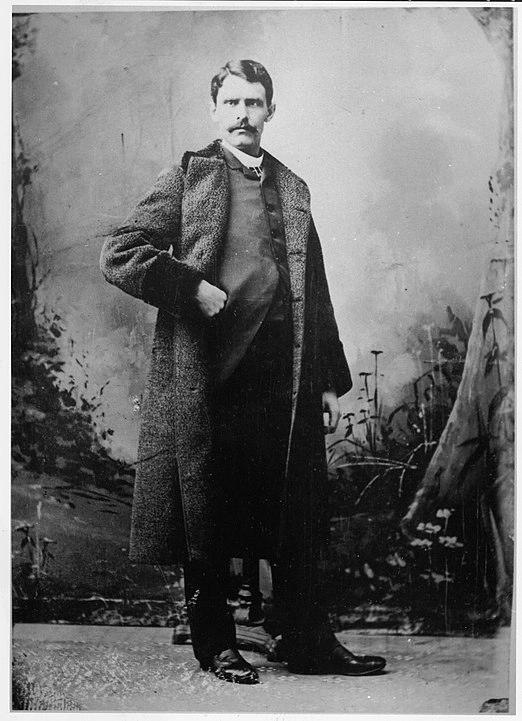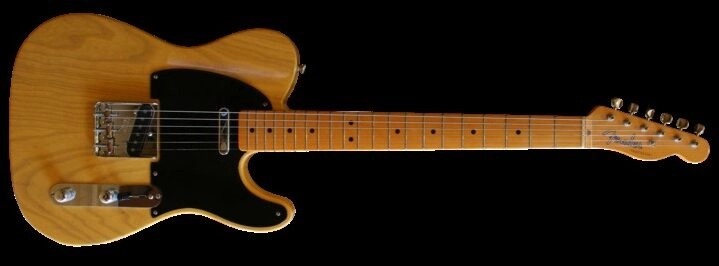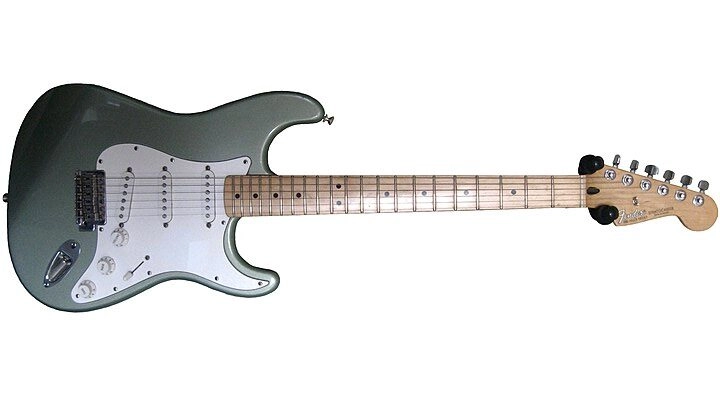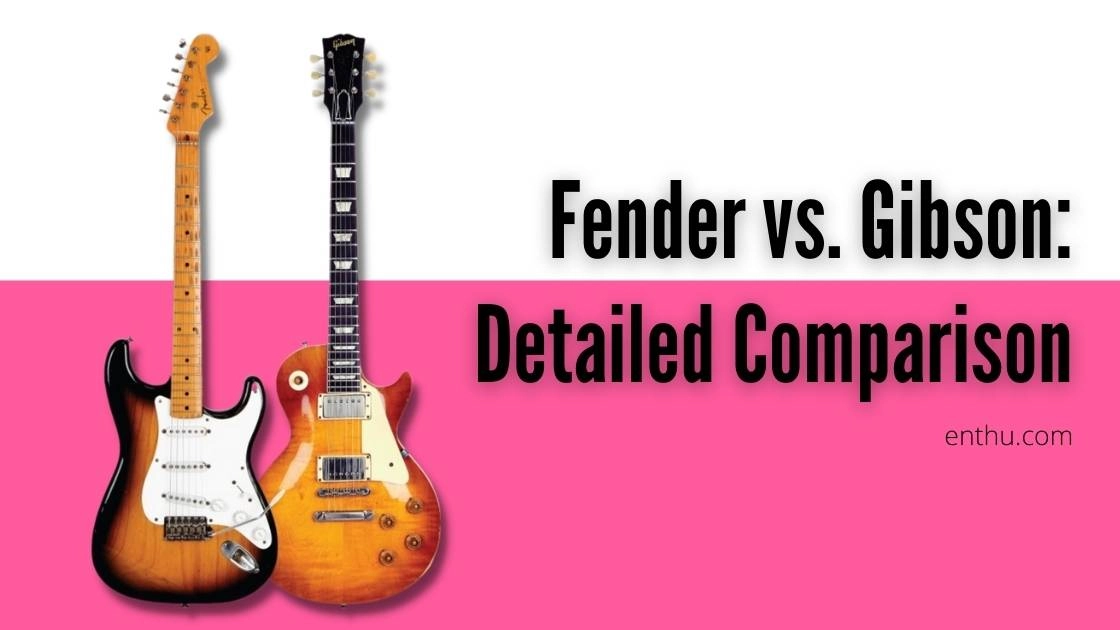Fender and Gibson are the most dominant giants in the guitar manufacturing industry. There are many different guitars on the market, but these two have been butting heads for ages.
You’ll find that most of your guitar heroes use one of the two. Something that comes up quite often is “Are Gibson better than Fender?” or “Are Fender better than Gibson?” As you might have realized there is no diplomatic way to say this. Both are fantastic brands that produce some of the best musical instruments in the world.
However, both have a character that renders a particular guitar more suitable to a specific genre. We will discuss everything, so hopefully, it’ll help you choose one as a beginner taking guitar lessons or as a professional looking to buy a new one.
The Gibson Story

Patented a mandolin design in the late 1800s that was much more durable than other instruments. He sold them out of a single-room workshop in Kalamazoo, Michigan, until his passing in 1918.
However, his design lived on as the company Gibson hired a designer - Lloyd Loar, to continue creating new instruments. The company invented its first commercially successful Spanish-style body electric guitar in 1936.
The Les Paul, perhaps the most iconic model from the company, was Gibson’s first solid-body electric guitar. In 1958 they also introduced semi-hollow body guitars with the ES-335; afterward, they came up with the Gibson SG and Firebird in the 1960s.
1. The Fender Story

Started Fender Guitars in 1946, and his first innovation was the production of solid body guitars. Up until that point, electric guitars had hollow bodies; and were somewhat fragile and complicated in design.
Zeo Fender’s guitar offered more straightforward designs: They sported a solid block of wood, and bridges were attached to the body, removing the need for extra adjustment of the elevated bridge.
The first commercially available guitar from Fender was the Telecaster, originally called the Tele, in 1951.

That same year, Leo Fender invented the Electric bass. Until then, bassists used an upright and massive instrument, making it difficult to carry around. Next, the Fender Stratocaster hit the market in 1954, introducing a tremolo bridge to the world.

Fender kept amazing innovation coming, introducing the Jazzmaster, Jaguar, Jazz Bass, and twin Reverbs amp over the next decade.
2. Fender vs Gibson
Style and Adaptability When choosing between Fender or Gibson guitar, there are many factors to consider. The critical factors for you to consider are Style and Versatility. Both have different models for different musical styles and tastes.
3. The Fender style
When we are looking at Fender v.s Gibson, Fenders have a bit different sound because of how they are made. Fenders are made with alder and ash wood, producing a brighter tone and a lighter feel.
Beginners and players with small hands might find these thinner necks more comfortable.
4. The Gibson Style
The Gibson electric guitar generally sports humbucker pickups, known for their thicker, rounder tone.
You also get less feedback, limiting the types of delay and overdrive tones you can experiment with.
Nonetheless, it ensures a cleaner and more consistent sound.
Gibson mainly uses mahogany for their guitar bodies, which gives it that slightly darker sound.
Fender vs Gibson: Other Factors
Body The most recognizable difference between Fender and Gibson is the variation in body shapes. A strat and a Tele look drastically different to a Les Paul, a big-bodied ES-335, or the double-cut SG.
Body shapes change the aesthetic, but they also impact the tone. The Les Paul is thicker than a Fender Strat, so there is more of a mass to resonate. The wood that makes the body out is more important than the body. Gibson uses more mahogany than Fender.
The Les Paul features a mahogany body with a maple top, and the body of an SG is usually all-mahogany - we can say the same for the Firebird. A mahogany body gives a darker sound, warmer, and usually with more sustain.
On the other hand, many Fenders use alder or ash, which gives a balanced and brighter tone, often with quite pronounced upper-midrange frequencies.
1. Pickups Fender Sports Single-Coil Pickups
whereas Gibson, are fit with humbuckers. Single coils have been around for a long time and have a brighter, thinner sound.
Single coil pickups can sometimes seize interference from radio signals, electric currents, etc., which is why Seth Lover put two single coils together and made a humbucker; it is so because it bucks the hum or interference.
The humbucker has a higher output and is a little louder; they are warmer, fuller, and thicker sounding. Some say before that single-coil pickup is good for clean sounds, and humbuckers are good for overridden sounds because humbuckers give out more signal and therefore distort better.
But it all comes down to choice. They often used single-coil pickups for funk, blues, pop, country, soul, and light rock. The humbucker is used for rock, blues, classic rock, metal, jazz, and punk.
2. Scale Length
The scale length is the distance between the top nut and the bridge saddles. This affects the tension of your strings and the actual sound you get from them.
The sound you get from lightly touching the string is slightly warmer and thicker on a Gibson. The sound on a Fender is more spaced out, which helps contribute to the guitar’s ‘chimey’ and bell-like tone.
3. The Radius of the Fingerboard
A fingerboard radius is a number that tells you how much of a curve the fingerboard on a guitar has. Fender guitars have either a 7.25” or 9.5” radius, while Gibsons have a 12” radius.
A shorter radius means the neck has a noticeable curve and a longer radius means the neck will be flatter. Some lead players prefer a thinner neck with a long radius, so that Gibson Les Paul Standard might be an ideal choice.
There are no set rules that say a lead guitarist will play Gibson; it’s just that the flatter fingerboard makes it more comfortable for some players to hold the guitar. Some Fenders have a compound radius; they go from 9.5” at the bottom to 12” towards the top.
Check out EnthuZiastic Guitar Classes for a personalized Guitar learning experience.
4. Why Choose a Fender?
Pros
Vast selection for beginners to premium
Incredible tuning stability
Better headstock design compared to Gibson
Lightweight and can be held for hours
Cuts through the mix of instrumental blend
Customizable
Cons
The single coils can’t handle much volume and make an unpleasant noise
The guitar can get overly bright and sound tiny on the bridge pickups in specific genres
The bolt-on neck and low output pickups cause them to have less sustain.
5. Why Choose a Gibson
Pros
Can quickly go from mellow and warm to aggressive at higher volume
Humbucker serve the role of removing the ‘Hum” when playing
No single coil issues and switches from clean tone to heavy tone without getting too ‘squishy’ or losing out on tone separation
Has both heavyweight models and lightweight models
Versatily of their pickups
Better semi-hollow and hollow-body guitars compared to Fender
Cons
It’s easier for Gibsons to be not intonated or go out of tune if not set up correctly
Generally, they are heavier and can tire your shoulder if played daily on shows
The weight and designs make them more prone to neck and headstock damage
They are very pricey, especially older vintage models
It’s very easy to make a Gibsons sound muddy if you are not careful
Models you should check out Choose
The ones that fit your budget and playing style. These brands guarantee quality and excellent conditions. Here are our favorite models from Fender and Gibson.
1. Fender American Ultra Stratocaster

The Stratocaster is the first mainline model that most non-guitarists have in mind when you mention the electric guitar. Legends like Jimi Hendrix, Jeff Beck, David Gilmour, and others use this iconic model. It is probably the most versatile guitar model that can play anything apart from heavy music.
2. Fender Player Stratocaster

While the American Ultra Stratocaster is a mainline model, the Player series is the Mexican-made modern counterpart to it. It has the same tonal quality as the Ultra Stratocaster and its most excellent playability but at a lower price.
The main difference between the mainline model is the pickup, overall electronic, part of the tonewoods, and attention to detail.
3. Gibsons Les Paul Standard ’60s Electric Guitar
The Les Paul Standard is what true rock sounds like. Blues and Rock legends use Les Paul Standard for its classic warm tone that can easily be heavily distorted.
It has the most sought-after vintage replicas from the 50s and the 60s due to its superb quality. The only downside of Les Paul Vintage replicas or the original is that they are expensive.
4. Epiphone Limited Edition 1959 Les Paul Standard
The Epiphone is Gibsons’ attempt to manufacture affordable instruments that stay to its American counterpart in design and tone.
This branch of Gibson guitar is not made in the US and has less expensive parts. But that doesn’t mean that they are low-quality instruments.


Conclusion
Final thoughts on the matter The only aspect you should ultimately consider when choosing between a Gibson and a Fender is the style you want or your current level. Fender and Gibsons are the only guitar builders who have contributed to the electric guitar’s evolution.
Both brands offer premium quality and affordable alternatives that stay true to the original. Some significant differences between Fender and Gibson guitars affect how you play them and the resulting sound.
The varying pickup ranges of wood and the scale length all change how a guitar will sound, and the fingerboard radius effect has a significant impact on how it will feel.
Guitars are tools to make music, and as such, there are no strict rules you need to follow. If it feels right, go for it.
FAQs
1. How much does a new guitar cost?
Those still new to guitar should expect to pay anywhere between $100 to $500 for their instrument. Depending on the brand and quality of artistry, the price of your guitar will change significantly.
2. Why does Gibsons cost more than Fender?
The Gibsons come out more expensive due to the more costly materials and time-consuming methods used to manufacture them. And they are made in the USA. All their factories are in cities where workers have relatively high wages.


Comments